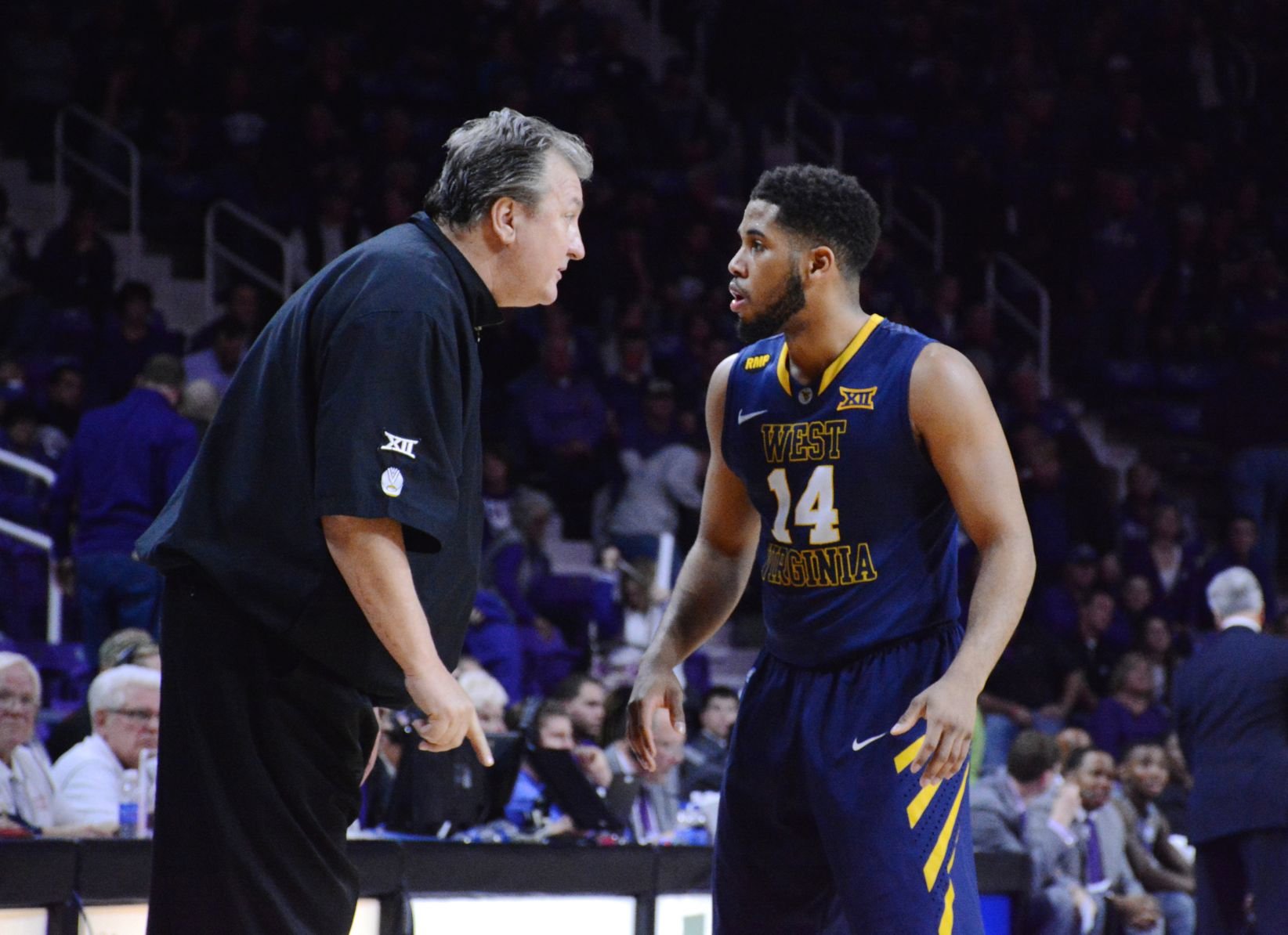‘That was the play we wanted’
February 17, 2015 by Mike Casazza
So many things happened in the final 30 seconds Monday night, things we’ll attempt to cover and spotlight here, things that get lost in the shadow of Juwan Staten’s offense and defense in the last 8.3 ticks. Above them all is this: At the biggest moment of the biggest game West Virginia has played this season, an offense that can really struggle to shoot and score, an offense that puts so much pressure on everything else the team does, an offense that has had so few things go right, that same offense suddenly had everything go as planned to beat RPI No. 1 Kansas.
You think about that.
Screen, inbound, defensive indecisiveness, possible officiating oversight, left-handed layup. It was all there when the Mountaineers needed it all to be there.
In truth, it was a little more complicated than that, and it began on the possession before Staten scored, when WVU’s heretofore iffy halfcourt defense kept the Jayhawks from adding to a 61-60 lead. The Mountaineers were giving up steady drives to Frank Mason, and Perry Ellis was getting what he wanted inside. If it wasn’t going to be there for them, then Wayne Selden was ready to make a play off the bounce or on the perimeter. Kelly Oubre, who used his length to get in the paint or to shoot jumpers over defenders, was out on the perimeter waiting to strike. Jamari Traylor had the area under the basket for an offensive rebound. There was a lot going on out there, a lot for the Mountaineers to cover.
And they did.
Mason missed a layup and Nathan Adrian, who was great despite missing four open 3s, battled enough to secure a valuable team rebound.
That was the first break. WVU wanted to defend there rather than foul, and it worked.
“At worst, we were going to have to come down and make a 3,” coach Bob Huggins said. “The people they had on the floor, we talked about fouling, but they took the guys out we were going to foul at the end of the game. They had Ellis, who had just made free throws. They had Mason, who made everything he threw up. They had Selden, who is shooting in league play 50 percent from 3 and you figure he’s going to make free throws. The had Brannen Greene, who’s probably the best shooter in America. Who are you going to foul? We had to get a stop.”
Well, you’re not going to foul Greene because wasn’t in the game. It was Oubre. That’s not exactly a great trade for WVU, though. Oubre was 2 for 2 from 3-point range and was hard to keep out of the paint when he wanted to get in the paint. He’s also missed one free throw since Jan. 24.
Let’s not forget Huggins factored his team into the thought process, too.
“If you don’t have Juwan Staten, you’re probably going to foul, even though they have the people they had in the game,” Huggins said. “You’d hope they miss a free throw or you come down and try to hit a 3.”
WVU had Staten, which mattered most at the end, but that was due in large part to everything else that happened in the final moments.
Here’s how the Mountaineers remember the closing sequence.
Continue reading…



